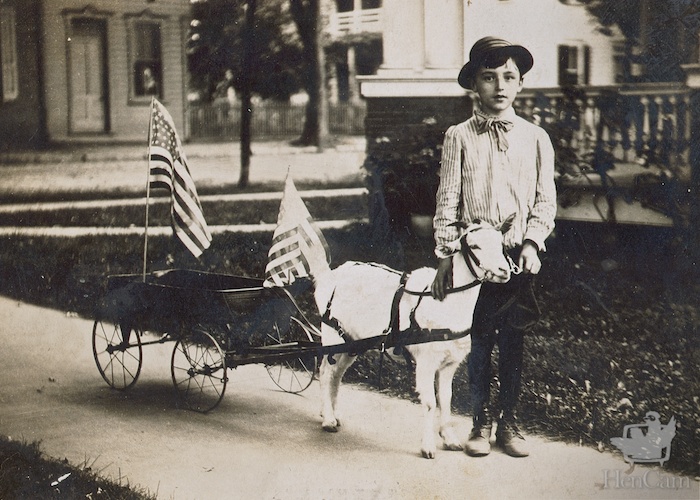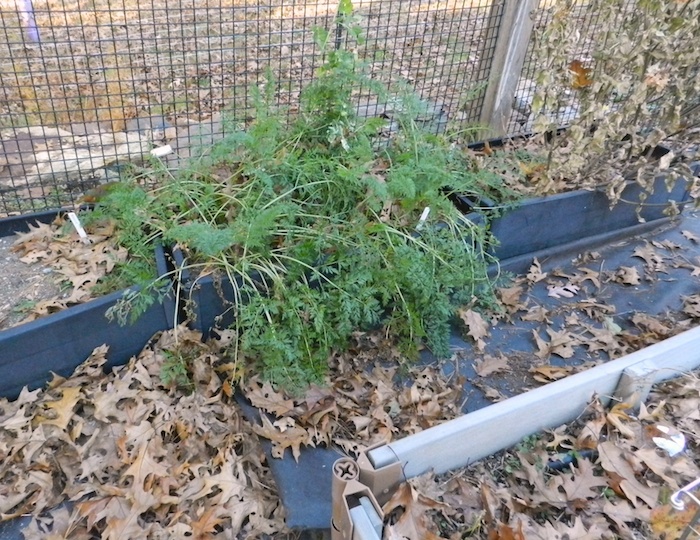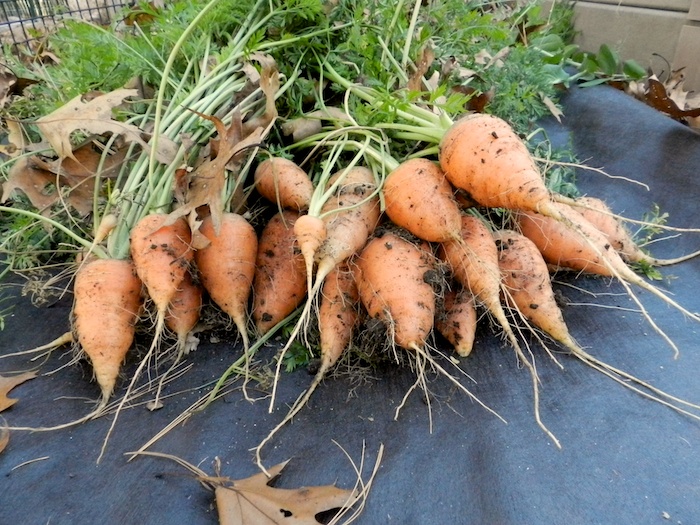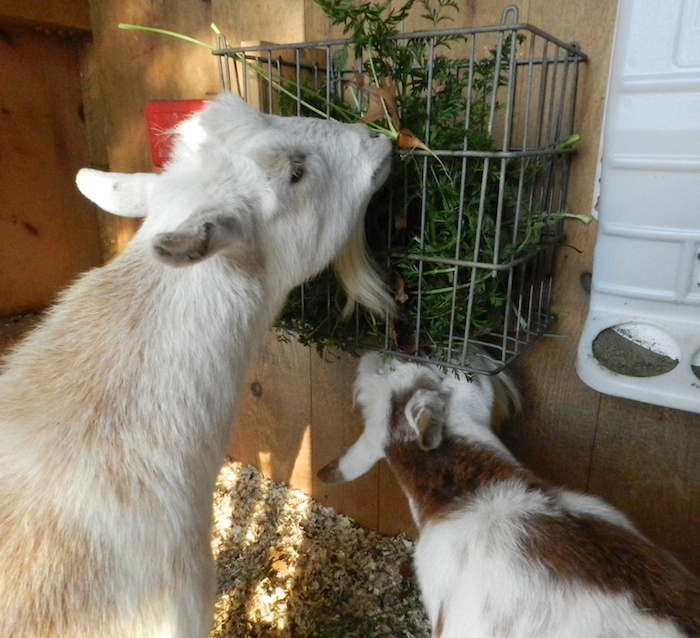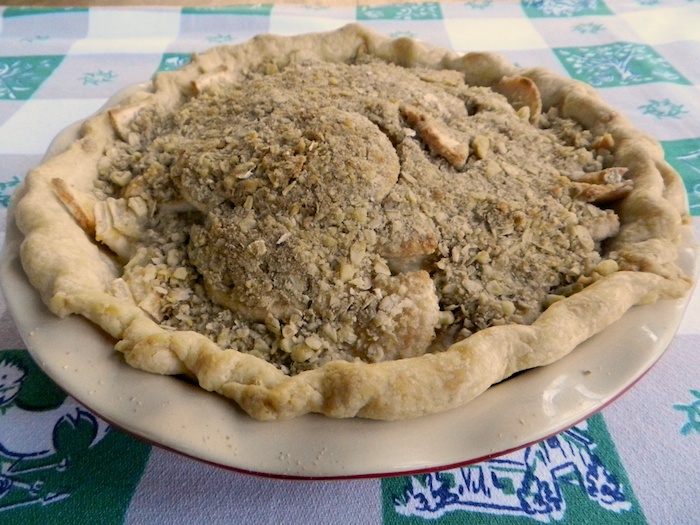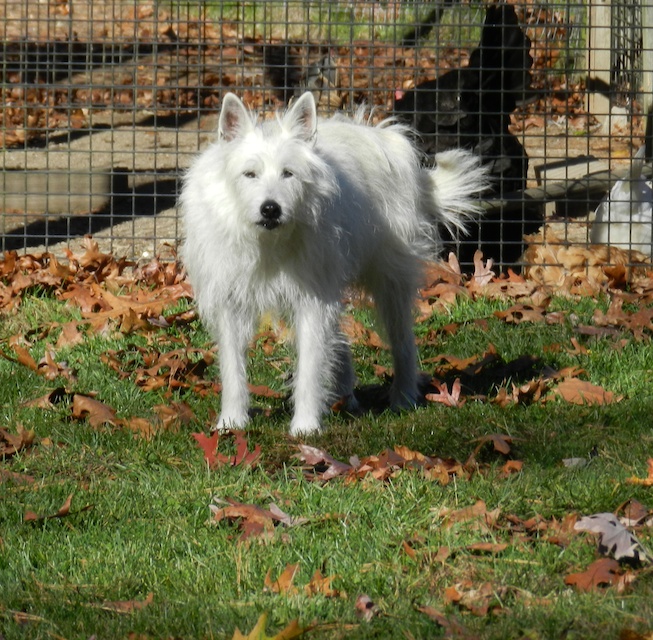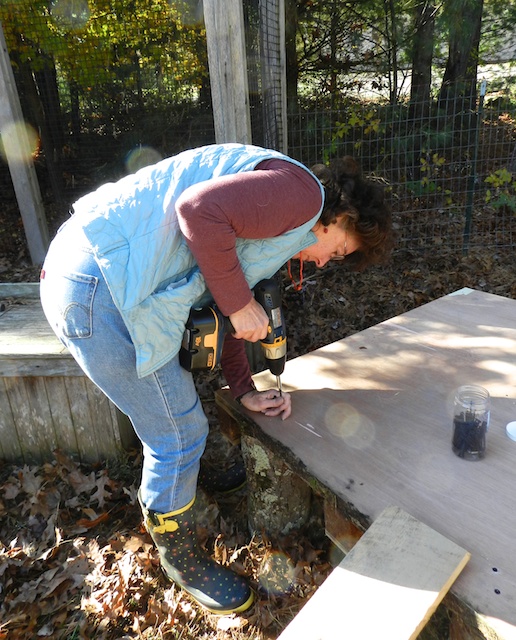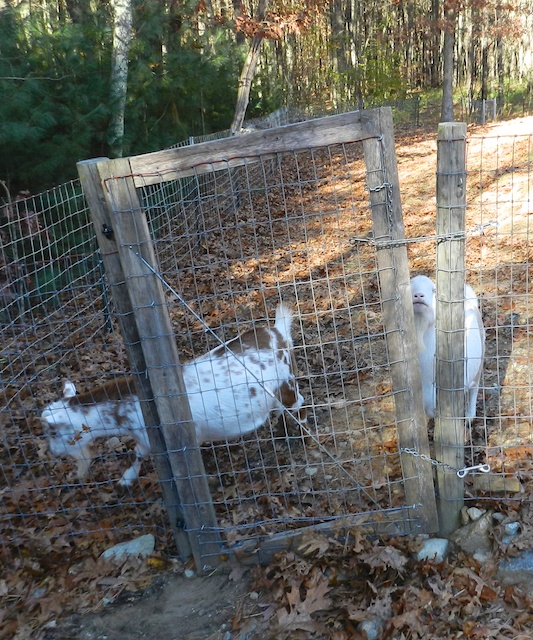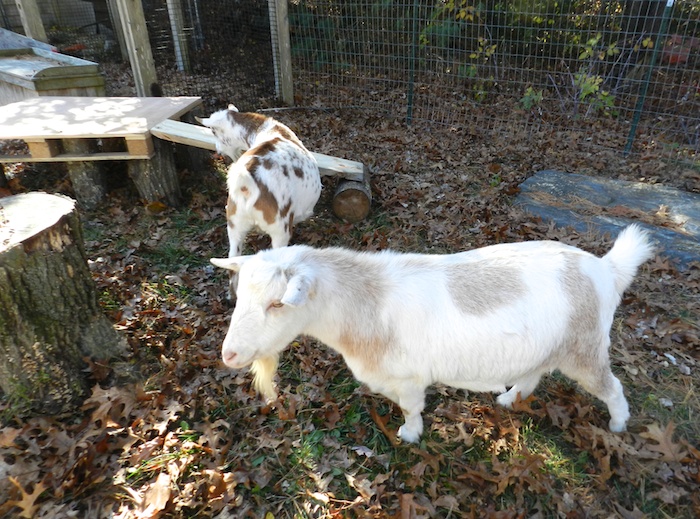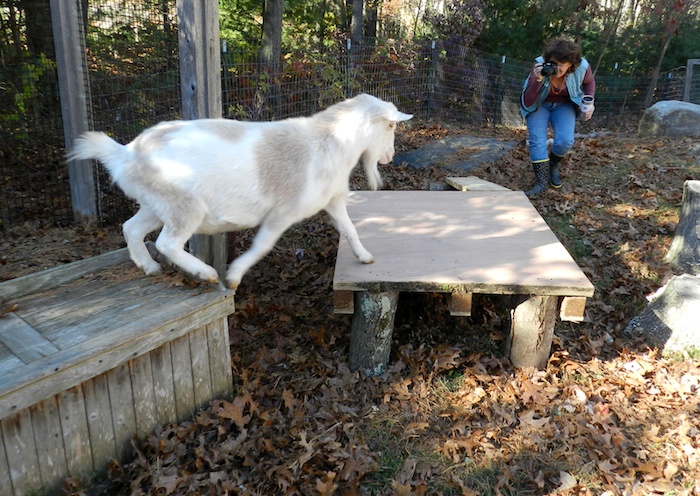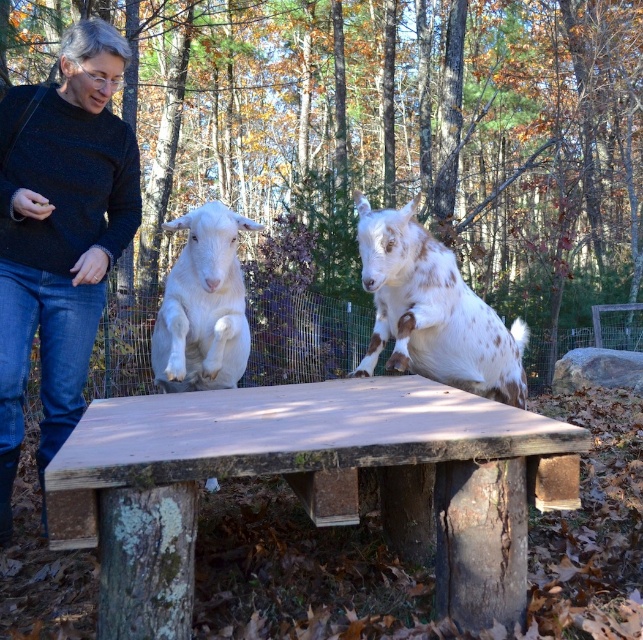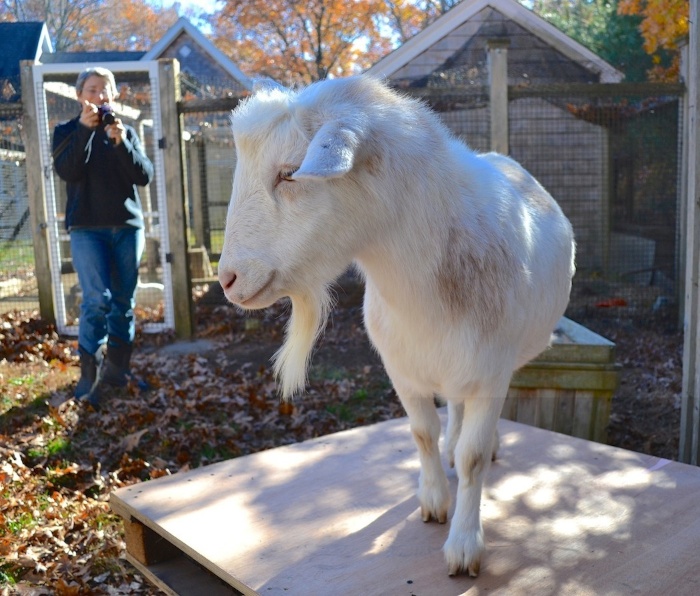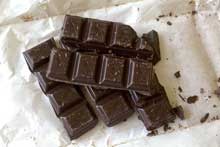Pearl, my beautiful splash Cochin, usually looks like a feather duster that would have been used in a Victorian mansion.
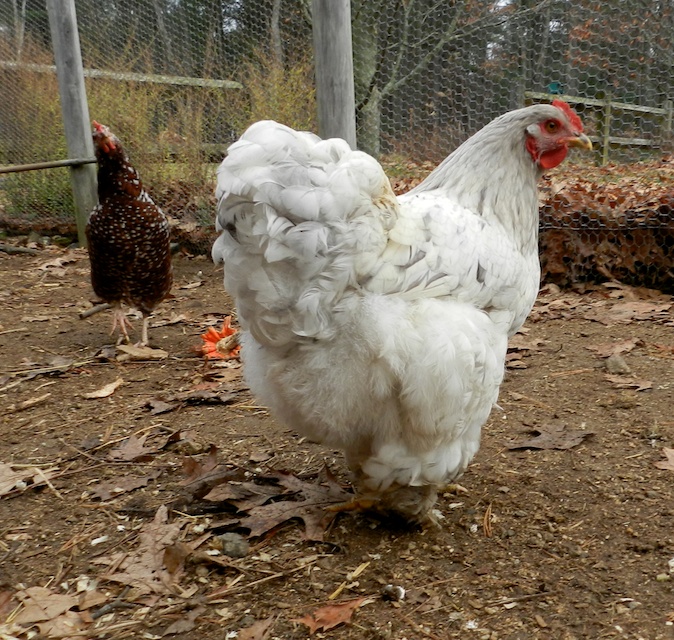
Cochins are fluffy because they have many more soft feathers than other breeds. Also, they lack hard, shiny outer feathers. But, each year, just like all other chickens, Cochins drop their thousands of feathers and grow in new ones. This should happen just once. But, for some reason, Pearl went through an early, partial molt in July. I wasn’t surprised, because the worst layers molt first, and Pearl rarely lays. After the molt, she went broody for weeks. Then, mid-October she roused herself from her broody stupor and went into a second molt.
Pearl has so many feathers that at first, you might not notice that she is molting. From a distance, Pearl appears to be as lovely as ever.
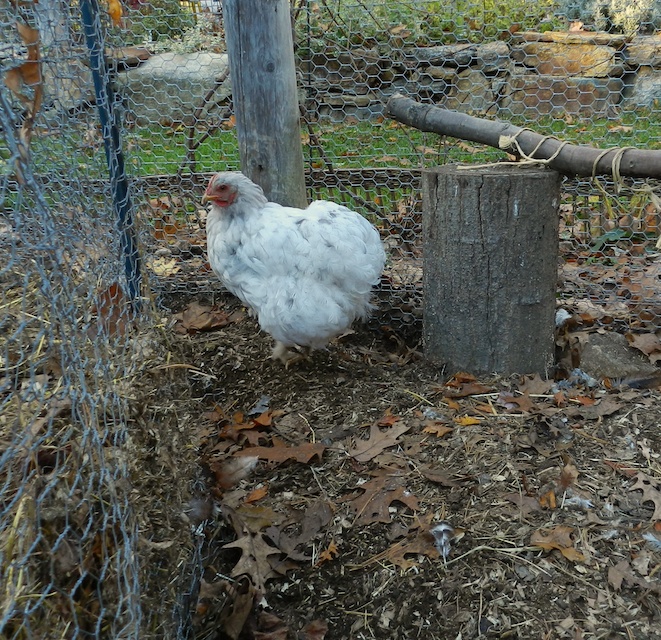
But, look closely, and you’ll see that her coat appears looser. New feathers are emerging on the wings. And her bottom looks like this. (It’s obvious when the wind is blowing!) No wonder normally friendly hens don’t want to be picked up during the molt. Would you want to be handled with quills sticking out of your bottom?
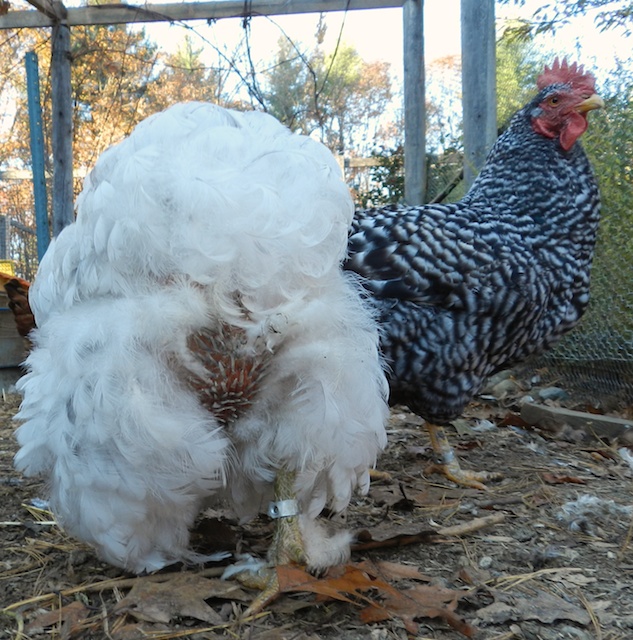
Cochins have feathered feet, and even those feathers fall out and new ones grow in. Looking at her legs, I became worried, as the scales are sticking out and not smooth like they should be. Was this scaly leg mite?
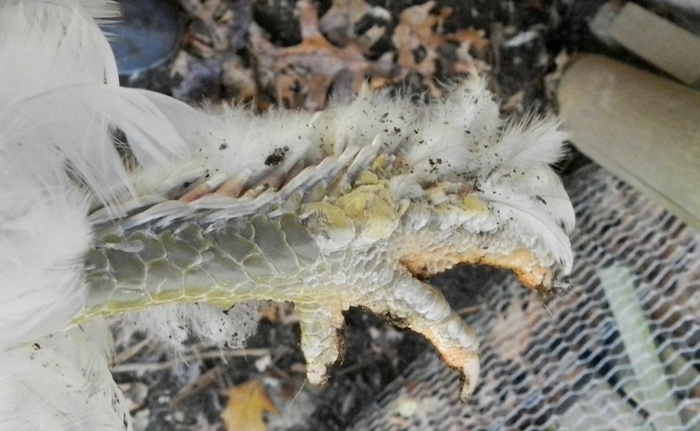
No, it was just the new feather shafts pushing their way out. It does look uncomfortable, doesn’t it?
A few more weeks and Pearl will be fully dressed again. Have patience, Pearl!
PS Because I know you’ll ask – I don’t do much different for my molting hens. They appreciate dust baths, so I make sure that they free-range and that their dust bathing bin in the coop is full and clean. I’m careful not to feed bread and pasta as treats, but do toss them a handful of my dog’s expensive fish kibble every few days, because the chickens need quality protein in order to regenerate their feathers. (But, overdoing the protein can cause problems, so I use restraint.) I recently got some chopped alfalfa, which is very good for them. Older hens can have a bit more trouble getting through the molt, so the ancient chickens in the Little Barn are getting a handful of shelled sunflower seeds (not much, a tablespoon per bird!) per day. But, really, all that they need is time and patience.
